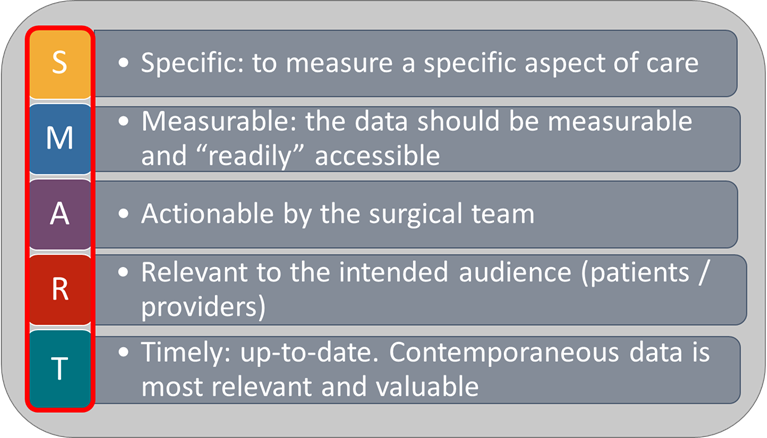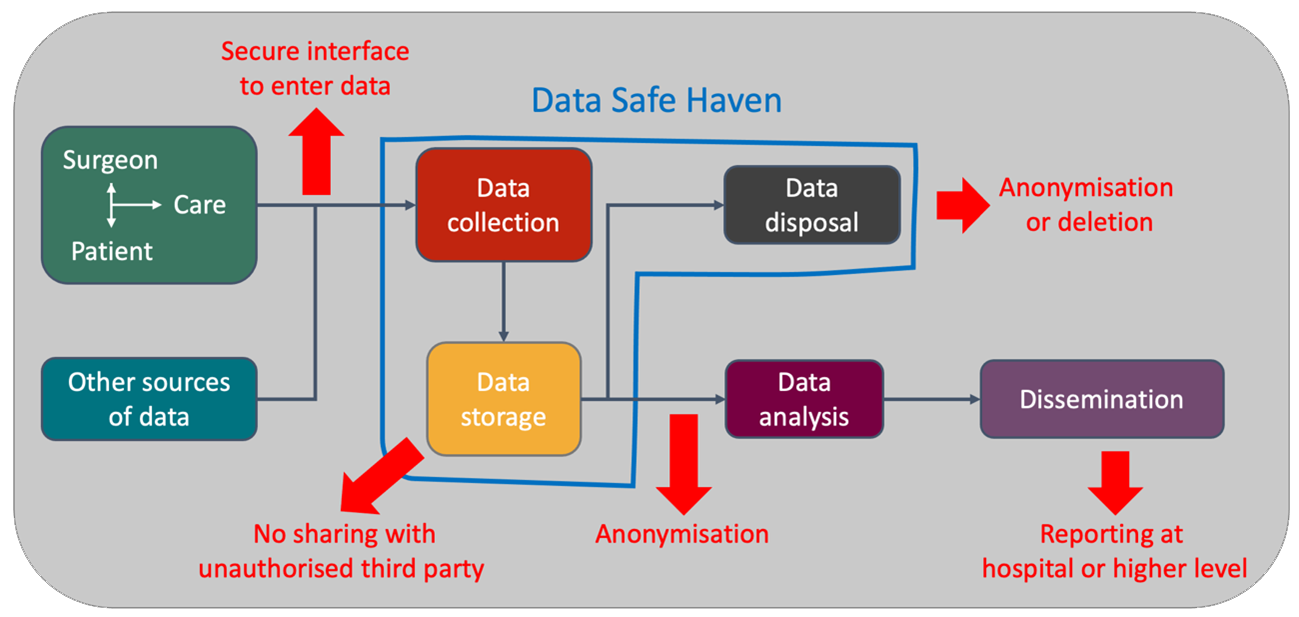
This page has been written for patients and members of the public interested in OMFS and the Quality and Outcomes in Oral and Maxillofacial Surgery initiative. There is a similar page in the professional section of the website, for surgeons, doctors/dentists in training, medical and dental students.
The British Association of Oral and Maxillofacial Surgeons (BAOMS) initiated the Quality and Outcomes in Oral and Maxillofacial Surgery (QOMS) project as a specialty-wide quality improvement and clinical effectiveness programme for Oral and Maxillofacial Surgery.
You can watch our introduction videos for a brief overview.
Oral and maxillofacial surgery (OMFS) is the surgical specialty concerned with the diagnosis and treatment of diseases affecting the mouth, jaws, face and neck.
The scope of the specialty includes, but is not limited to, the diagnosis and management of facial injuries, head and neck cancers, salivary gland diseases, facial disproportion, facial pain, impacted teeth, cysts and tumours of the jaws as well as numerous problems affecting the oral mucosa such as mouth ulcers and infections. The OMFS specialty is unique in requiring dual qualification in medicine and dentistry.
Oral and maxillofacial surgery is divided into several subspecialties such as surgical treatment of head and neck cancer, craniofacial deformity, facial soft and hard tissue injuries due to trauma, infections in the head and neck region and, management of pathologies in the mouth and jaws.
Oral and maxillofacial surgeons perform operations on an outpatient basis (e.g. pre-implant surgery and placement of dental implants, removal of impacted teeth, oral soft tissue procedures e.g. biopsies) or on an inpatient basis. The latter are generally more complex operations and patients need to be admitted. Inpatient treatments include operations to:
- Treat complex craniofacial fractures and soft tissue injuries of the mouth, face, and neck.
- Treat infections in the mouth, face and neck areas generally due to complex infection arising from the teeth and/or facial structures.
- Remove cancerous or benign tumours and subsequent reconstructive surgery when required.
- Correct facial disproportion (known as orthognathic surgery), repair of cleft lip and palate, and other congenital facial deformities.
- Remove impacted teeth and complex buried dental roots.
- Remove cysts and tumours of the jaws.
- Treat problems of the temporomandibular joint.
- Cosmetic surgery including face lifts, eyelid and brow surgeries and rhinoplasties.
For more information, visit the Royal College of Surgeons of England website.
Return to Table of contents
The management of patients in the healthcare service has changed in recent decades.
A patient-centred approach has become the core component of what is considered high-quality healthcare. In current surgical practice, the patient’s perspective and involvement in shared decision-making and a focus on patient-reported outcomes have become increasingly important.
The increasing cost of healthcare has reached unsustainable levels. Healthcare commissioners are under increasing pressure to ensure that expenditure is directed towards care that delivers a demonstrable benefit in health-related wellbeing to patients and efficiency in the delivery of healthcare services will help ensure a sustainable model of service provision.
What does it mean in practice?
- Greater public transparency and accountability.
- The availability of quality outcome/performance measures will allow review and improve the practice of care providers.
- Offer patients the information and opportunity to make informed choices about their care.
- Evidence for service improvement and quality assurance of operations/treatment offered.
- Better data for health service commissioners when planning for the future delivery of healthcare.
Patients and commissioners need accurate and timely information, in their decision making processes. QOMS aims to be in a position to provide them with that information to make those choices. Currently, there is insufficient systematic collection of data to demonstrate effectiveness or quality of care across OMFS in the UK.
We need to measure the quality of care in OMFS. That is why BAOMS initiated the Quality and Outcomes in Oral and Maxillofacial Surgery (QOMS) project for its specialty.
For more information, visit the Royal College of Surgeons of England website
Return to Table of contents
The Agency for Healthcare Research and Quality (AHRQ) defines quality ion healthcare as “doing the right thing for the right patient, at the right time, in the right way to achieve the best possible results”. Although this definition is widely accepted, quality remains however difficult to measure. There are no easy measures of quality that can capture all these different aspects. Instead, we must rely on several measures. For example, choosing the best possible results or outcomes depends on your audience:
- Surgeons are generally interested in short-, medium- or long-term outcomes (e.g. has the tumour been completely removed? Has the patient remained disease free? Did the patient develop any postoperative complications?)
- Patients want to know what their outcome may be (e.g. can I be cured? What are the risks?...), how their quality of life may be affected (e.g. can I breathe, eat, or speak normally? Do I look better? Can I go back to work?...), and how satisfied they are with the care received. There is a strong psychological component attached to the patient’s experience as there could be a gap between surgical/treatment success and patient satisfaction. Patients’ outcomes and experiences are usually collected using specific tools or questionnaires called patient-reported outcomes or experience (PRO or PRE).
- For commissioners, outcomes are about care quality and costs. Databases already exist for the latter (they are referred to as administrative and billing databases, e.g. the Hospital Episode Statistics held by NHS Digital in England).
The matter becomes even more complicated when looking at other part of the AHRQ definition: what is the best treatment plan, who is the best patient for a particular intervention, when is the optimal time for intervention, what is the ideal way to provide care?
What becomes clear is that one size will not fit all, and results will depend on the patient, their condition(s), and the healthcare professionals treating them and the settings where patients are treated.
We need a system to capture all or parts of this information.
Return to Table of contents
We have to accept that measuring quality is difficult and impossible to achieve in its entirety. QOMS is a project developed to measure the quality of care provided by OMFS teams and needs to measure quality in a way that is:
- Relevant and specific to OMFS.
- Measurable and readily accessible. This means it must rely on collecting information regularly documented in clinical care.
- Actionable by the surgical team and relevant to the surgical team, patients and/or the commissioners.
- Timely as the value of data decreases with time.
Figure 1. Characteristics of quality of care indicators.

Finally, a reputable quality-of-care management system also needs to combine existing statistics and audits, new clinical registers, and patient attitudes.
Above all, we need to collect information about healthcare and patients, about you.
Return to Table of contents
Aims:
- Produce information on the quality of care received by patients undergoing oral and maxillofacial surgery in NHS hospitals.
- Ensure that any change or improvements to OMFS services benefit patients.
- Learn about the best ways in which surgical teams can use patient information to improve quality of care.
- Understand better what happens to patients after they leave hospital following surgery, and whether the surgery has had a beneficial effect on their longer-term health and wellbeing.
After consultation with BAOMS surgeons and with inputs from patient representatives, it was decided QOMS would be a bespoke collection of clinical audits and service evaluations. Both use clinical registries to gather the information they need to fulfil their aims. A clinical registry is a database to collect patient data.
Clinical audit & service evaluations
Clinical audit is a way of appraising medical care by evaluating how well the care you receive matches the standards of care set down for a particular condition. It helps doctors to check whether the care they provide to patients meets those standards and helps to identify any shortcomings. It gives real opportunities to make improvements. When there are no standards of care available, the process is not called audit but service evaluation.
QOMS plans to identify best performers against any given metric across the NHS, quality assure that data, and then generalise the care practices that underpin it by case studies, newsletters, presentations at conference, as well as BAOMS website content. Where performance falls significantly below the average, and data checking confirms that to be the case, BAOMS intends to provide mentorship for change.
The areas of OMFS practice that will be surveyed in the 1st iteration of QOMS are:
- Oral and dentoalveolar surgery
- OMFS Trauma: Mandibular and isolated orbital wall fractures
- Oncology (cancer): Head and neck cancers with a special interest in oral cavity and oropharynx squamous cell carcinoma (the most current type of cancer)
- Orthognathic surgery (position the upper, lower or both jaws): all
- Reconstruction (correction of defects): involving free-tissue transfer
- Skin cancers: non-melanoma skin cancers
Find out more about QOMS Clinical audits and service evaluations.
Return to Table of contents
Condition- or procedure-specific registries
Those registries are not used to measure quality of care, but instead to gather evidence to answer a question. For example, salivary gland cancers are a rare and heterogeneous group of tumours for which we know little about their natural history and treatments, by accumulating the data of patients affected by those tumours, we can try to find out if there are commonalities between patients, between conditions or which treatments work better. This process is akin to research but has a set of distinct characteristics:
- It uses real-world data rather than data generated specifically for research.
- It deals with questions where research is not easily done due to the rarity of the condition or the lengthy follow-up required. For example, salivary gland cancers develop over long period of time and their follow-up can be as long as 10 years following treatment.
Find out more about QOMS condition- or procedure-specific registries.
Return to Table of contents
The nature and extent of the patient data QOMS collects depend on the subspecialty and the aspects of care being measured. But what do we mean when talking about collecting patient data?
Patient data can be divided into:
- Identifiable information e.g. patient name, NHS number, gender, date of birth and postcode. They are generally used by healthcare professionals to identify patients and trace their records across the various hospital record systems. They are also used to communicate with clinicians to validate information and potential mistakes. Some data fields (such as gender and age) are used in data analysis for risk adjustment of the complexity of case-mix.
- Clinical data, which include information about baseline health status (co-morbidities), diagnosis, surgery and recovery/rehabilitation, they are used to assess outcomes and measure performance.
Figure 2. Simplified QOMS data flow with ‘hotspots’

Every time a patient interacts with a healthcare professional, new data is generated. That could include symptoms, diagnosis, treatment and recovery. We asked your surgeons to share some of that information with us. The data is entered into our electronic database system which is separate from that of the hospital. The data is collected and stored securely on servers in the UK.
Whilst data remain under our care, we will never share information that can identify you with any other organisations for reasons other than linking datasets with approved partners. The data collected may be however shared for secondary research but only after ethical approval has been obtained, and the application will be thoroughly reviewed by BAOMS. No patient identifiable information will be passed on.
When we have collected data to complete an annual or project cycle (3 years) we will analyse it. Before we take it out of the secure servers, we anonymise the dataset. This means that NHS numbers are deleted, dates and postcodes are transformed into usable information like age, time elapsed between two clinical events, distance between a patient’s home and the hospital. That way all the information that could be used to identify a patient has been removed. During the analysis stage, the data of many patients are further combined together (e.g. averages) to produce a picture of quality of care in a hospital or a region.
Data is kept for 4 years after the end of data collection. Once some or all of data has been meaningfully analysed we will delete the patient identifiable information. The anonymised data can be kept and used for secondary purposes (e.g. research) other than its primary purpose (audit/service evaluation). When an entire dataset is no longer required, it will be completely deleted.
Return to Table of contents
- QOMS was initiated in 2018.
- A pilot was run between December 2019 and March 2020. Six hospitals in England took part and trialled the questionnaires and REDCap.
- In summer 2021, QOMS launched nationally and is now open to all OMFS units in the UK.
- In early 2023, the QOMS Inaugural report that covers the 1st year of data collection, was published. The next report is expected to be published in 2024 at the end of the current QOMS cycle.
Return to Table of contents
Return to Table of contents
Last updated: February 2024